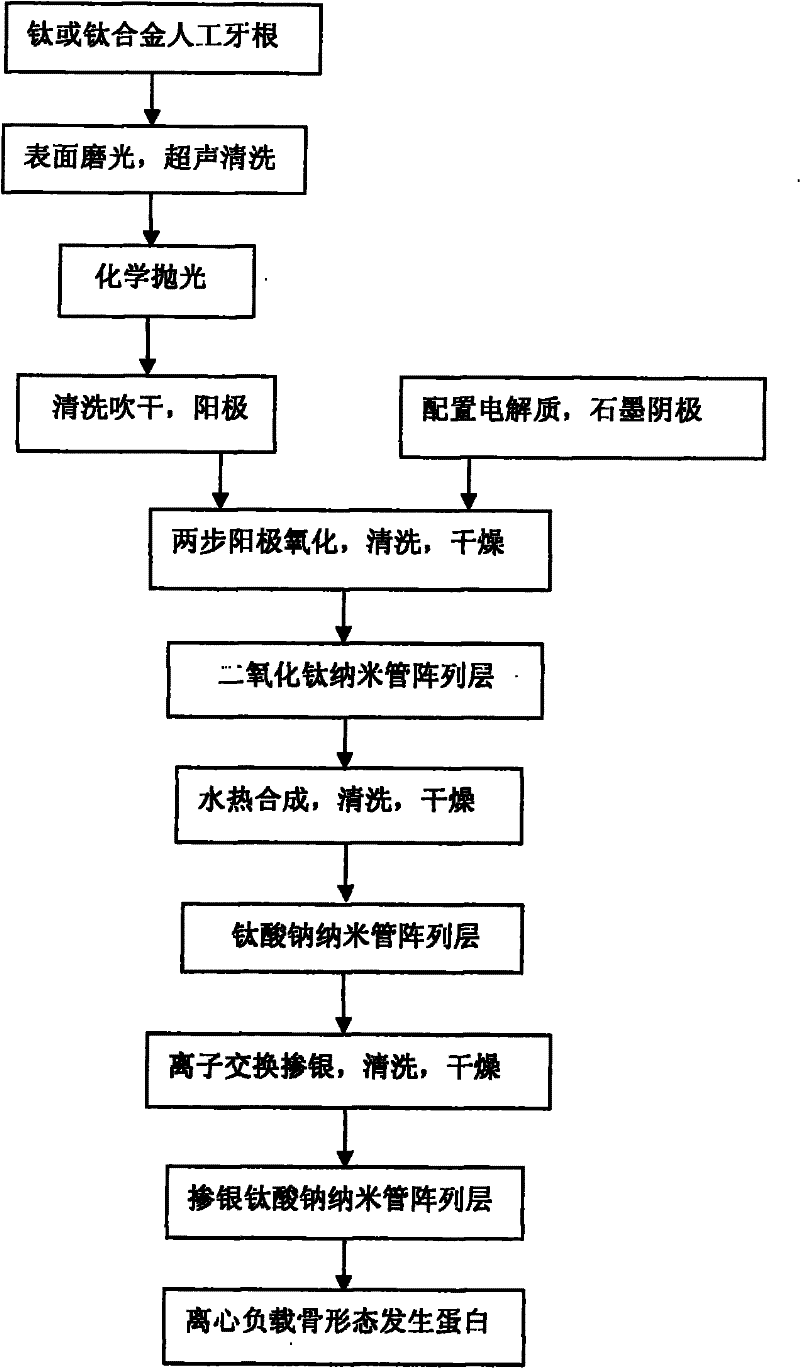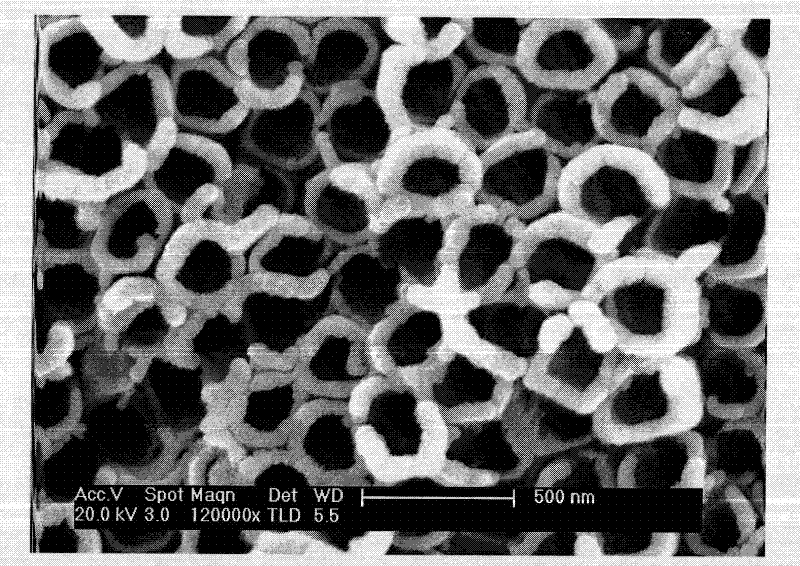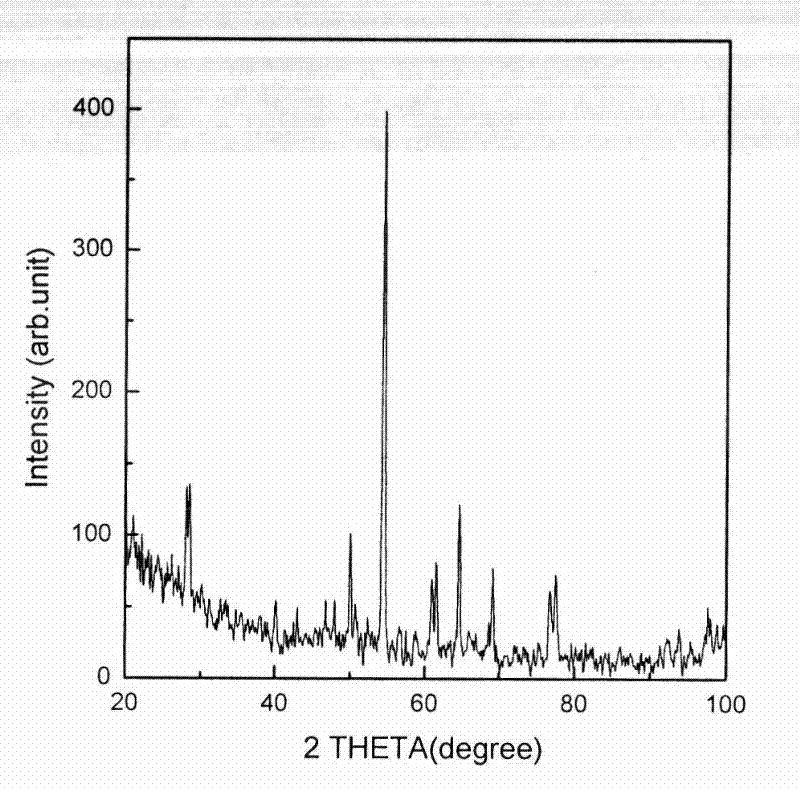Rare earth element cerium slow-release artificial tooth root based on nanotube array surface
A nanotube array, artificial tooth root technology, applied in dentistry, dental preparations, dental prostheses, etc., can solve the problems of difficult to exert the osteogenic effect and can not be distributed evenly for a long time, to inhibit the growth of bacteria and induce osteogenesis. effect, the effect of reducing the inflammatory response
- Summary
- Abstract
- Description
- Claims
- Application Information
AI Technical Summary
Problems solved by technology
Method used
Image
Examples
Embodiment 1
[0029] (1) First choose pure titanium to process the artificial tooth root;
[0030] (2) Surface pretreatment of the artificial tooth root: After the surface is polished, it is washed with acetone, deionized water and absolute ethanol in sequence for 10-30 minutes, followed by HF and HNO 3 and water (volume ratio: 1:4:5) chemically polish for 20-40 seconds, rinse thoroughly with deionized water, and dry for use;
[0031] (3) Preparation of aqueous organic electrolyte solution: using ethylene glycol as a solvent, other active ingredients are: water 2vol% (volume percent), phosphoric acid 4vol% (volume percent), ammonium fluoride 0.3wt% (mass percent);
[0032](4) Preparation of titanium dioxide nanotubes by two-step anodization: the surface pretreated artificial tooth root is used as the anode, graphite or platinum sheet is used as the cathode, and the first anodization is carried out in an aqueous organic electrolyte solution. The specific anodization parameters are: voltage ...
Embodiment 2
[0037] (1) First choose titanium to process the artificial tooth root;
[0038] (2) Surface pretreatment of the artificial tooth root: After the surface is polished, it is washed with acetone, deionized water and absolute ethanol in sequence for 30-60 minutes, followed by HF and HNO 3 and water (volume ratio: 1:4:5) chemically polish for 40-60 seconds, then rinse thoroughly with deionized water, and blow dry with a hair dryer for use;
[0039] (3) Preparation of aqueous organic electrolyte solution: using ethylene glycol as a solvent, other active ingredients are: water 2vol% (volume percent), phosphoric acid 4vol% (volume percent), ammonium fluoride 0.5wt% (mass percent);
[0040] (4) Preparation of titanium dioxide nanotubes by two-step anodic oxidation: the surface pretreated artificial tooth root is used as the anode, graphite is used as the cathode, and the first anodic oxidation is carried out in an aqueous organic electrolyte solution. The specific anodic oxidation para...
Embodiment 3
[0045] (1) First choose pure titanium to process the artificial tooth root;
[0046] (2) Surface pretreatment of the artificial tooth root: After the surface is polished, it is washed with acetone, deionized water and absolute ethanol in sequence for 60-90 minutes, followed by HF and HNO 3 and water (volume ratio: 1:4:5) chemically polish for 60-80 seconds, then rinse thoroughly with deionized water, and blow dry with a hair dryer for use;
[0047] (3) Preparation of aqueous organic electrolyte solution: using ethylene glycol as a solvent, other active ingredients are: water 4vol% (volume percent), phosphoric acid 6vol% (volume percent), ammonium fluoride 0.5wt% (mass percent);
[0048] (4) Preparation of titanium dioxide nanotubes by two-step anodization: the surface pretreated artificial tooth root is used as the anode, graphite or platinum sheet is used as the cathode, and the first anodization is carried out in an aqueous organic electrolyte solution. The specific anodizat...
PUM
 Login to View More
Login to View More Abstract
Description
Claims
Application Information
 Login to View More
Login to View More - R&D
- Intellectual Property
- Life Sciences
- Materials
- Tech Scout
- Unparalleled Data Quality
- Higher Quality Content
- 60% Fewer Hallucinations
Browse by: Latest US Patents, China's latest patents, Technical Efficacy Thesaurus, Application Domain, Technology Topic, Popular Technical Reports.
© 2025 PatSnap. All rights reserved.Legal|Privacy policy|Modern Slavery Act Transparency Statement|Sitemap|About US| Contact US: help@patsnap.com



